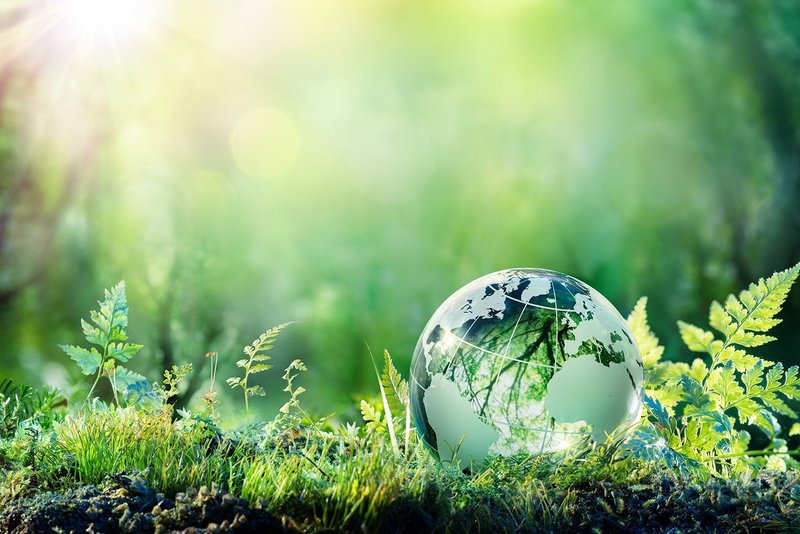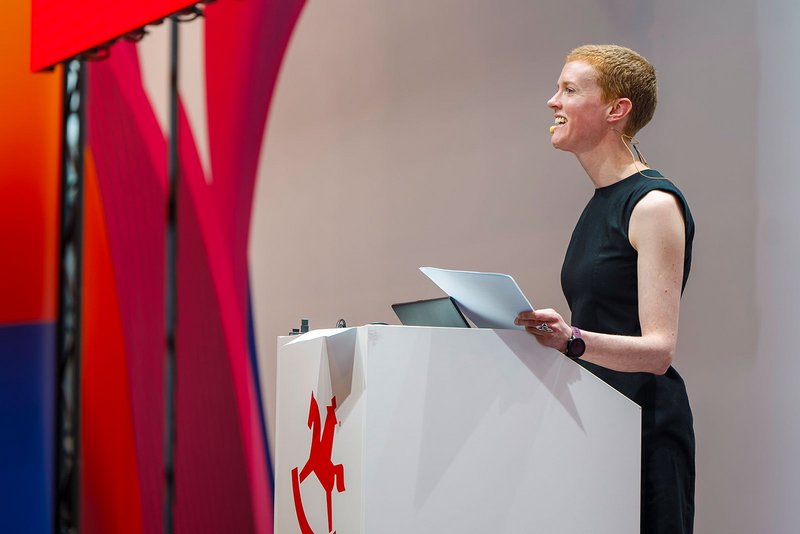
Ideas for the plastic of the future
Insight into research: degradable bioplastics for toys
By Peter Thomas

Simply reusing plastics to make toys? Sounds great, but it's not that easy. Nevertheless, there are solutions for toys made from sustainable plastics. The Fraunhofer Institute for Applied Polymer Research (IAP) is even working on degradable bioplastics. They are extremely versatile and efficient: plastics have established themselves as the most important materials for toys for many years. However, manufacturers are currently looking for alternatives to the use of classic polymers. This is because these are still largely obtained from fossil sources such as crude oil, natural gas and coal. The idea behind this: To reduce CO2 emissions during production. The changeover is not easy. This applies in particular to the reuse of plastic that has already been processed. This recycling seems to be an easy way. However, for high-quality products such as toys, only very pure and clean material from the recycling loop would be considered. Lego, for example, experimented with the use of recycled polyethylene terephthalate (PET) beverage bottles. However, the Danish company abandoned this approach again in 2023 because the huge effort involved would not have made recycling sustainable. The search for alternative materials is continuing at full speed and Lego has already tested several hundred candidates. Some of the clamping bricks are already made from bio-based polyethylene. More and more manufacturers are following similar paths: they are focussing on plastics based on plants, organic residues or, in future, green hydrogen.
"We think toys are a very good application"

What sometimes gets confused in the public debate about alternative plastics are the properties of bio-based and biodegradable materials. Products from the first area do not consume fossil raw materials during production. However, once they reach the end of their useful life and are not disposed of properly, they can become an environmental problem in the form of microplastics in the long term. Biodegradable plastics, on the other hand, do not remain in the environment as microplastics for many decades, but can degrade within a few years. The Fraunhofer Institute for Applied Polymer Research (IAP) in Schwarzheide (Germany) is working on such materials, explains Thomas Büsse. The 63-year-old graduate engineer has long headed the IAP's Biopolymers Processing Technology Centre. His successor is Dr Jens Balko. ‘You can imagine the properties of our polymers to be similar to the degradation behaviour of wood,’ describes Büsse. ‘These bio-based plastics are therefore very durable if they are well cared for. In the environment, however, our polybutylene succinate, for example, degrades within two to three years, while conventional polyethylene remains stable for several hundred years.’
Small batches of bread boxes and drinking bottles have already been successfully produced from the IAP's polymers. The research institute is now looking for partners to make the leap into industrial production. From Thomas Büsse's point of view, toys are very promising: ‘We think toys are a very good application. This is because our materials are bio-based and contain neither harmful additives nor ecologically questionable colourants. They also have forward-looking environmental properties.’
Major topic in the industry
The topic of sustainable plastic has long been a major issue in the toy industry. It has gained momentum over the past ten years in particular. Sustainable plastics offer manufacturers the opportunity to place messages in favour of a more responsible approach to the environment. Take Mattel, for example: the company launched the ‘Barbie Loves the Ocean’ doll line back in 2021. It used plastic that consists of around 90 per cent recycled ocean-bound plastic. This refers to plastics that are collected in areas without official waste collection in the vicinity of waterways. Otherwise, they would end up in the sea and turn into microplastics.

Playmobil has also been working intensively on this topic for many years, and the first bioplastic key ring developed in collaboration with the World Wildlife Fund (WWF) was launched on the market in 2013. Playmobil's strategy is just as diverse as that of other brands: The approaches range from collectible figures made of plastic that consists of at least 95 per cent sugar cane-based polymers to recycling materials from kitchen appliances for the ‘Wiltopia’ play world. When it comes to recycling, however, the Franconian manufacturer comes up against the same limits as other toy companies: Recyclates from the public recycling economy (so-called post-consumer materials) are difficult to obtain in the same quality as conventional polymers. Bio-based plastics, on the other hand, pose no problem as they are available in a wide range.
The pitfalls of recycling

Plastics expert Thomas Büsse knows the pitfalls of recycling plastics: The Fraunhofer researcher says that experts find it difficult to understand why the use of plastic recyclates plays such a major role in the public debate. He cites two important reasons. The first is the chemistry of plastics: they consist of macromolecules, chains of tens to hundreds of thousands of atoms. Such long molecular chains can break during recycling due to temperature and mechanics, which changes their thermal and mechanical properties. Metals, on the other hand, consist of individual atoms, which is why they can be successfully melted down and reused again and again in the circular economy. The second point is the diversity of polymers: high-quality recycling of plastics is only possible with completely unmixed granulates. In reality, however, a wide range of materials are collected together for recycling, for example via the Yellow Recycling Bag in Germany. Separating these fractions is time-consuming and expensive. Added to this is the contamination of plastics in the circular economy. ‘It's hard to imagine turning it into a plastic part for children's toys that can be used without hesitation,’ says Thomas Büsse. The Fraunhofer Institute is therefore focussing on the production of new polymers for its biodegradable plastics. Bio-based materials serve as the basis. ‘The search for raw materials is an essential part of our project,’ explains the researcher, ’we have identified cellulose-containing waste in the region as a promising source, for example. This includes damaged wood, municipal green waste and fermentation residues. Waste from the paper manufacturing industry would also be conceivable.’
High innovation potential
The examples show how the toy industry can benefit from the high innovation potential in the field of sustainable plastics. In terms of their chemical and mechanical properties, new materials can keep pace with polymers that have been established for decades. Due to their currently higher costs, they will initially be used primarily for high-quality products - such as toys.
About the author
Telling stories about technology and people: This has fascinated Peter Thomas, the journalist, author, cultural scientist and lecturer, for more than 30 years. Technical toys are always in focus, from construction kits to interactive digital educational toys. After studying and working as a research assistant at university, Peter Thomas writes for daily newspapers, magazines and corporate publications in German and English-speaking countries. In addition to the world of games, his focus is on mobility, security, energy and medical technology.




